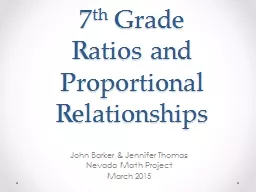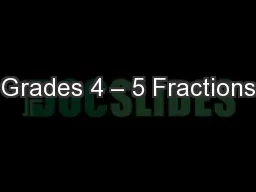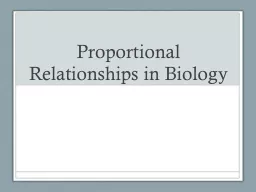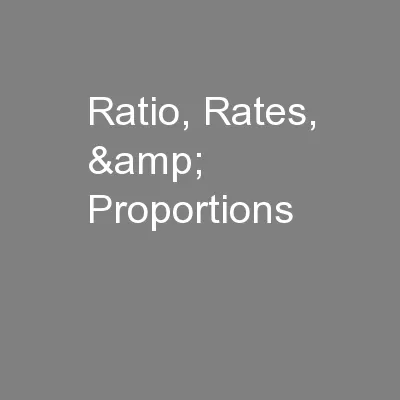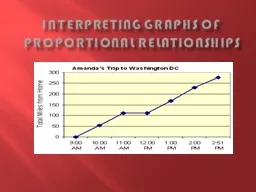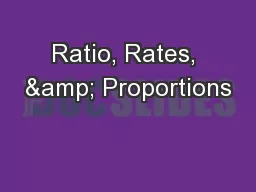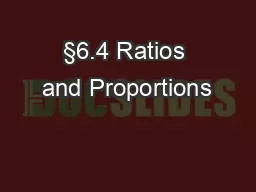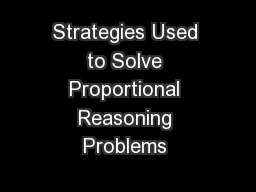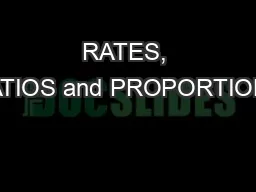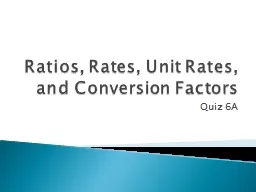PPT-7 th Grade Ratios and Proportional Relationships
Author : danika-pritchard | Published Date : 2018-03-15
John Barker amp Jennifer Thomas Nevada Math Project March 2015 Big Ideas Ratio A ratio is used to measure two different things in two different units Ex How far
Presentation Embed Code
Download Presentation
Download Presentation The PPT/PDF document "7 th Grade Ratios and Proportional Rel..." is the property of its rightful owner. Permission is granted to download and print the materials on this website for personal, non-commercial use only, and to display it on your personal computer provided you do not modify the materials and that you retain all copyright notices contained in the materials. By downloading content from our website, you accept the terms of this agreement.
7 th Grade Ratios and Proportional Relationships: Transcript
John Barker amp Jennifer Thomas Nevada Math Project March 2015 Big Ideas Ratio A ratio is used to measure two different things in two different units Ex How far a car drives with how long it takes to get to the destination . Please refe r to the 201415 Test Administration M anual for requirements and instructions For more information contact your Regional ESD Partner The High School grade of accountability is 11 th grade Although not required 12 th graders may also tes Grades 6 – 7 Ratios and Proportional Relationships. Grade 8 Functions. Progressions for the Common Core State Standards in Mathematics (draft). Ratio Proportional Progression 6 – 7 . ©The Common Core Standards Writing Team 26 December 2011. Bell Ringer…. Are 2/3 and 6/12 proportional?. No; 6/12 = 1/2 ≠ 2/3. Are 2/3 and 10/15 proportional?. Yes; 2/3 = (2*5)/(3*5) = 10/15. Are 2/3 and 4/9 proportional?. No; both are simplified. Proportional Shapes. Ratios. A . ratio. is a comparison of . two. numbers.. Example: Tamara has 2 dogs and 8 fish. The ratio of dogs to fish can be written in three different ways. .. . . ***. Be careful with the . Graphs of Proportional Relationships. Flour. (Cups). Cookies. (Dozens). ---. -----. --. 4. 6 8. 9 12. 12 16. Yes, it is proportional. The ratio of cookies divided. by flour is always 4/3 or 1.3333.. I love chocolate, so I’m going to get a slice of the 6-layer cake!. I want the one that has more chocolate flavor, so I’m getting the 3-layer cake!. The . Chocolatey. Cake Debate. . If you wanted to buy a slice of the cake that had the . Ratios. A . ratio. is a comparison of . two. numbers.. Example: Tamara has 2 dogs and 8 fish. The ratio of dogs to fish can be written in three different ways. .. . . ***. Be careful with the . 3/28/17. How do we write ratios?. How do we write and simplify rates?. How do we decide whether two ratios/rates are proportional?. Today We’ll Discuss. Definition:. The . ratio. of two numbers . The OGAP Framework. Core Mathematics Partnership. Building Mathematical Knowledge and. High-Leverage Instruction for Student Success. Thursday . November 12. , . 2015. Battery Problem. Solve this problem in at least 2 different ways:. Christiana . Athanasiou. , MIT. 4. work with: Krishna . Rajagopal. (MIT). . Misha. . Stephanov. (University of Illinois). . Outline. Introduction. Critical Contribution to Particle Multiplicity Fluctuations. WALL FOLLOWER. © 2015, EV3Lessons.com, Last edit 11/17/2015. Learn how to use proportional control with the ultrasonic sensor to follow walls. Prerequisites: Data Wires, Proportional Control, Loops, Math Blocks, Sensor Blocks. RATIOS. A . ratio. compares the magnitude (size) of two quantities. There are two types of ratios: part-part and part-whole.. RATIOS. A . ratio. compares the magnitude (size) of two quantities. There are two types of ratios: part-part and part-whole.. KWL – . Ratios and Rates. What you Know Want to learn What you learned. Chapter . 1 . Notes. Chapter . 1 . Notes. Ch. . 1 . EQs. Lesson 1: . How does finding the GCF help you to solve real-world problems? . Quiz 6A. . A comparison of two numbers by division. Ratio. . A comparison of two quantities that have different kinds of units. Rate. . A rate in which the second quantity is 1.. Unit Rate. . Ratios, Rates, Unit Rates, & Conversion Factors.
Download Document
Here is the link to download the presentation.
"7 th Grade Ratios and Proportional Relationships"The content belongs to its owner. You may download and print it for personal use, without modification, and keep all copyright notices. By downloading, you agree to these terms.
Related Documents

